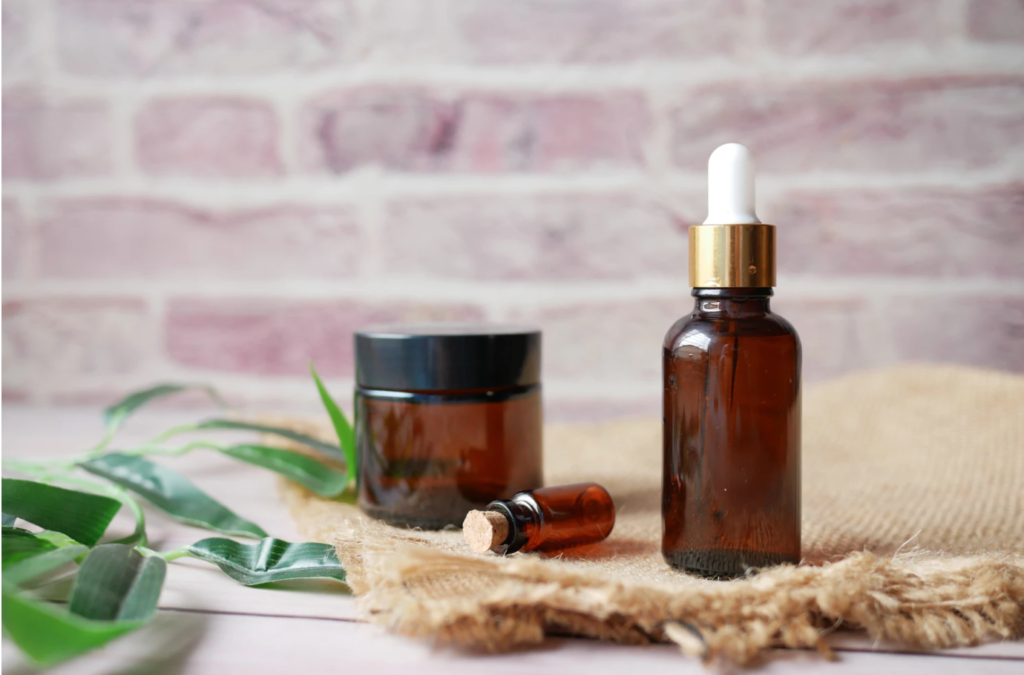More than ever before, consumers aren’t interested in any product — they’re interested in the process.
As public interest in sustainability continues to climb, many cosmetic manufacturers are seeking more natural and environmentally-friendly emulsifiers and ingredients for their products. The benefits of "green" beauty products extend beyond trends — increasing studies show the toxicity of conventional cosmetics, and the natural cosmetics market continues to grow rapidly and consistently.
Bio Lab Exotique’s Founder and CEO, Ollia Tzarina explains about sustainable cosmetics:

What Are Green Cosmetics?
In modern marketing, the word "green" has become synonymous with "organic" or "healthy." When a consumer sees the phrase "green cosmetics," they will automatically make eco-friendly assumptions about the product or company.
But the field of green cosmetics still needs clarification. Typically, the term is used to describe products using environmentally-friendly formulations, production practices or packaging methods.
With respect to the cosmetics industry, "green" and "sustainable" cosmetics are defined as cosmetic products using natural ingredients produced from renewable raw materials. Many companies use petrochemical ingredients derived from petrol, a non-renewable and economically volatile resource. Bio-based oleochemicals, on the other hand, derive from renewable plant and bacteria sources and are the crux of the green cosmetics movement.
How Are Sustainable Cosmetics Made?
Cosmetics developers worldwide are doggedly pursuing these oleochemicals, along with any potential sources for them. Some examples of common sources include:
- Natural Oils: Palm and coconut oils are often used to derive fatty alcohols, which are used as chemical surfactants. Other oils include argan oil and avocado oil. Glycerine, a derivative of palm oil, is a common byproduct.
- Agricultural Plants: Soybeans, corn and other agricultural plants are used throughout the cosmetic industry to produce oils and alcohols. Green cosmetic emulsifiers, surfactants and biocatalysts are derived using these plants, which can be cheaply and sustainably sourced.
- Bacteria: One example of a renewable resource currently under development is the Deinococcus bacteria, a bacterium studied by Deinove in France for its chemical production properties. Deinove has used the bacterium to create aromatic ingredients and pigments for the cosmetic industry, representing a potential market value in the hundreds of millions of dollars.
Manufacturers split these raw materials into oleochemicals at a processing plant. The fats or oils are divided by hydrolysis, which uses water, or alcoholysis, which uses alcohol.

What is the impact of skincare products to the environment?
The beauty industry contributes to pollution and drains natural resources in multiple ways – with our everyday actions as consumers exasperating the problem.
There are reports that more than 120 billion units of packaging are produced every year by the global cosmetics industry, much of which is not recyclable. The majority of beauty products come packaged in plastic, which – when talking about your average moisturiser pot – can take nearly 1,000 years to decompose. Then there’s the plastic wrappings, paper inserts, cardboard sleeves, foam, mirrored glass and more, sometimes all present in one purchase.

How Bio Lab Exotique addresses the challenges faced by the saturated skincare industry?
With a new push toward clean beauty, the biggest obstacle isn’t consumer demand; it’s that beauty brands need to figure out how to source, manufacture, and scale clean products.
Producing a truly clean product is especially challenging under traditional manufacturing methods because it requires visibility into the entire development process to make sure every ingredient is safe and sustainably sourced. In addition, producing a clean product from nature may deplete natural resources or require purification processes to compensate for variability in quality.
Bio Lab Exotique addresses these challenges and is enabling a clean beauty transformation that benefits consumers and the planet.



